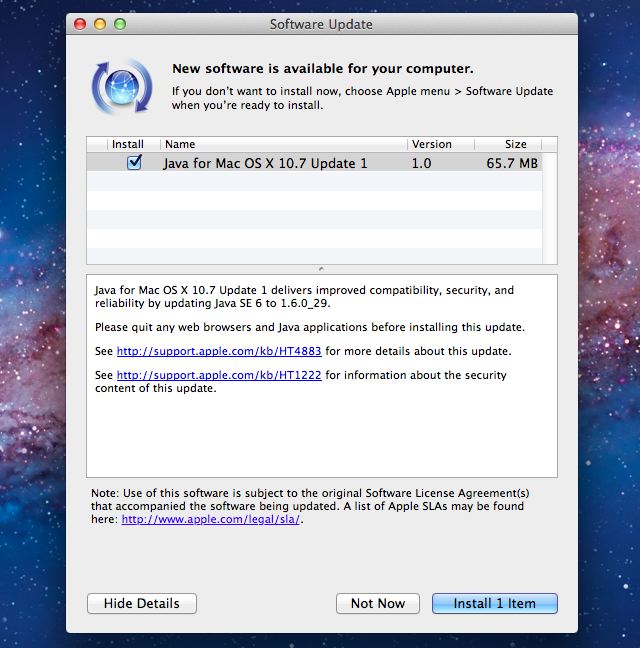
- #Install java on mac mountain lion mac os x#
- #Install java on mac mountain lion mac os#
- #Install java on mac mountain lion update#
- #Install java on mac mountain lion software#
- #Install java on mac mountain lion Pc#
#Install java on mac mountain lion mac os#
#Install java on mac mountain lion mac os x#
Also, Mac OS X needs its own hard drive- a minimum of 10 GB of space is required, but at least 50 GB of space is recommended. Be sure to read the Hackintosh compatibility guide very carefully, to check whether or not your computer qualifies. However, not every computer will work with Mac OS X.
#Install java on mac mountain lion update#
If your computer already has Mac OS X Lion installed, Niresh will just update Lion to Mountain Lion normally, without deleting any of your apps or files. It can be the same computer as the one mentioned in the previous point.
#Install java on mac mountain lion software#
To set up iAtkos on Windows, you have to use special software like Transmac. DMG files are rather difficult to work with, since they don't work with Windows by default. Meanwhile, iAtkos is distributed as a "DMG" file, which is a proprietary "disk image" format made by Apple. Niresh is distributed as an "ISO" file. The ISO format is a standard DVD image format that works on just about everything.

iAtkos only works with the less common (and more expensive) dual-layer DVDs and Bluray discs, because the iAtkos installer is slightly too large to fit on a regular DVDs. However, there are a few reasons why you may want to use Niresh instead. iAtkos is the far more popular choice of the two.
#Install java on mac mountain lion Pc#
If you're interested in installing Mac OS X on your PC with a distro, then you'll have two main options: Niresh, and iAtkos ML2. If you don't have any qualms with the legal issues regarding distros, they're actually the most convenient way to set up a Hackintosh. This will replace all the files I accidentally removed (the important system files) and got it all up and running again.Distros are pirated copies of Mac OS X that have been modified to work with a PC. Within Pacifist load the PKG (from the Java 6 image) and install the complete package and overwrite all existing installation. The only solution was to get Pacifist (look for it on the web). Also, installing Java 6 from Apple directly (download img) did not help. Also, Apple updates did not recognise that Java was gone.

Just installing Java 7 did not help nor does a system reboot. I initially removed the Apple installed Java 6 (1.6) installation manually, I removed the directory /System/Library/Frameworks/amework and other Java references (yes, I know it is/was a bad idea). With the above setting I’ve had to remove those variables in order to make it work! Note: I’ve had manually set the “JAVA_HOME” and “JRE_HOME” variables in the “.profile” file. This immediately fixed the issue and all terminal applications worked again. Ln -s /Library/Java/JavaVirtualMachines/jdk1.7.0_11.jdk/Contents/ CurrentJDK So, in order to point it to Java 7 I’ve had to do the following: rm CurrentJDK Digging around a bit showed me that the installation created sym links in the “/System/Library/Frameworks/amework/Versions/” directory.Īs it turns out the “CurrentJDK” linked to the “old” Java 6 (1.6) installation.

One of the problems, I’ve had was that no application on the terminal actually picked up the Java 7 JDK. Now the above should all be according to the book, but as things are when it comes to Java they are never “click and go”. Now, if you use “java -version” it should actually give the output that it used Java 7. After that, you can use the following command to make Java 7 the active version to use: /usr/libexec/java_home -v 1.7.0_11 -exec javac -version Once downloaded simply run the installer and it (should) install Java 7 properly on your system. As Apple actually only installs Java 6 (1.6.x) one needs to get Java 7 from the Oracle website at the Java SE download site. Today I set out to get Java 7 JDK running on MacOS X Mountain Lion (10.8.2).


 0 kommentar(er)
0 kommentar(er)
